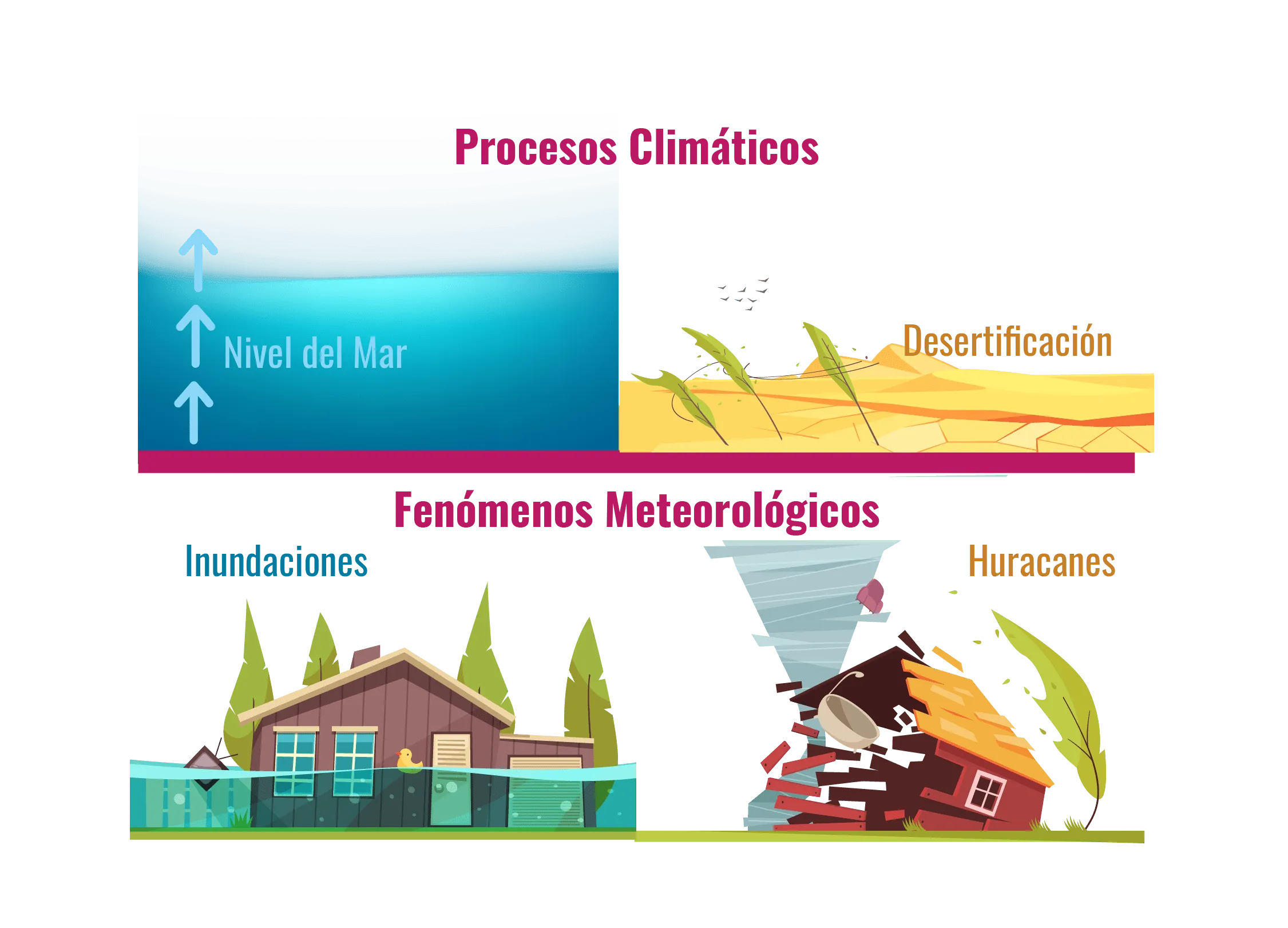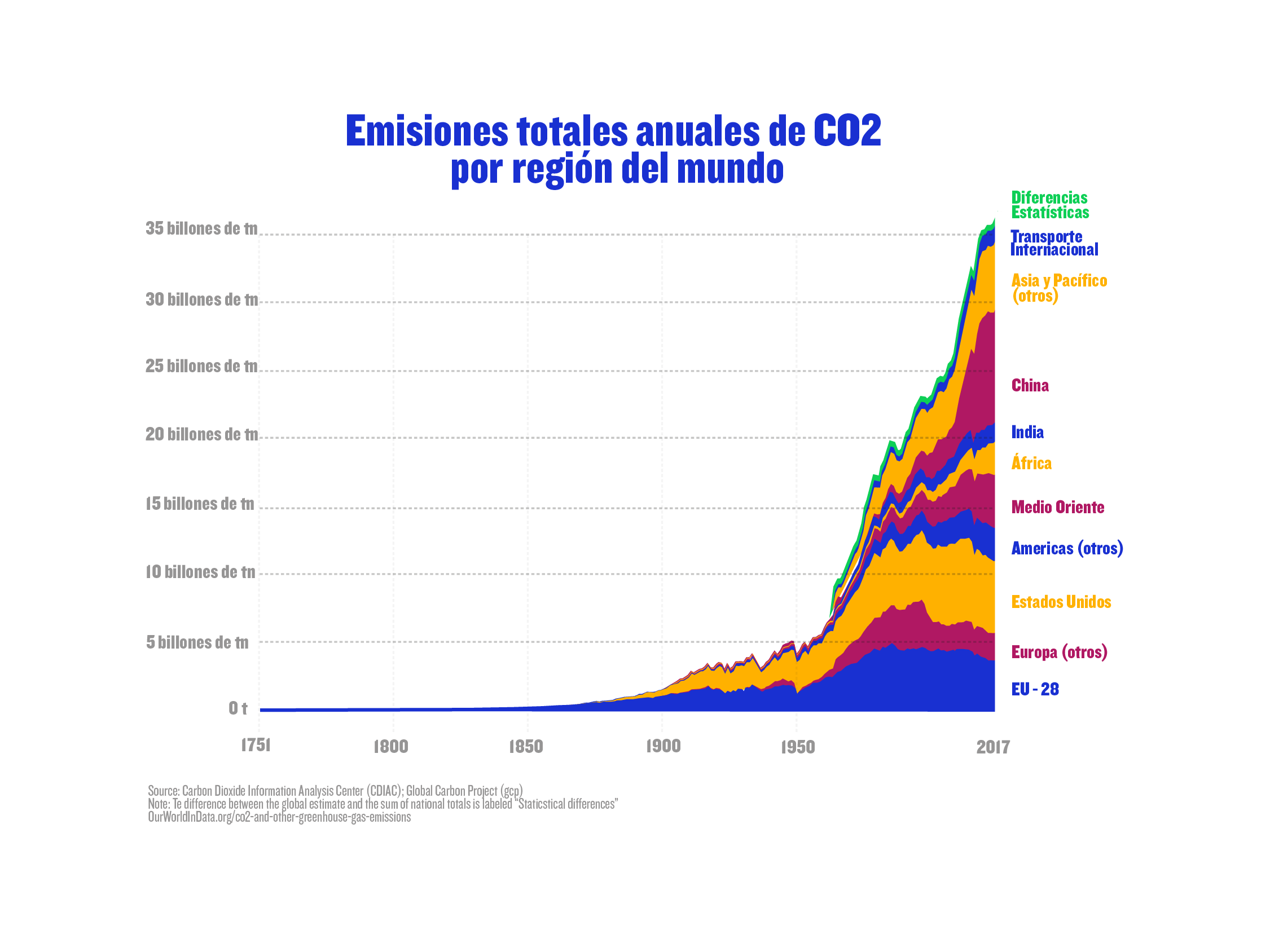Climate migration: Mexico and its invisible migrants.


.webp)
As a student of International Relations, I am constantly motivated to investigate the different factors that influence the problem of globalization; my specific interest is climate change, my objective is to contribute to improving the lives of people and the environment.
I began researching the struggle of ecofeminist groups and the gender inequality gap that climate change creates. I realized that different social groups have a different degree of vulnerability to the effects of the climate crisis, and then I found them: climate migrants. The most serious effects of climate change are and will be on the most vulnerable populations. The consequences are and will be greater than we imagine. One of them will be the involuntary mobility of communities at the national and international levels, which will influence land use, natural resources and, of course, political responses at the local and national levels.
Learn more about the Environmental Crisis and the Gender Division
The IPCC 1(by its acronym in English) defines climate change as “climate change attributed directly or indirectly to human activity that alters the composition of the global atmosphere and that adds to the natural variability of the climate observed over periods of comparable time” (IPCC, 2013; p.188).
In the same way, human activity has changed globally, exposing migration due to factors related to climate change. Based on the Global Migration Report 2020 prepared annually by IOM (IOM, 2019), it analyzes a specific chapter between human mobility and climate change. It shows that every year millions of people change their place of residence as a result of natural disasters or in anticipation of their impact on their place of residence (IOM, 2019).
1 The Intergovernmental Panel on Climate Change (IPCC)
The risk of migratory flows associated with climate change was highlighted in the first IPCC assessment2 and since then -1990-, the impacts of climate change have increasingly overshadowed other types of environmental change as drivers of migration.
According to Robert McLeman (Brown, 2008) there are the meteorological effects of climate change that affect populations, forcing them to migrate, which in turn are divided into two types:
-Climatic processes: They are slow, such as the rise of the sea, salinization of soil for agricultural use, desertification and water scarcity.
-Meteorological phenomena: Sudden phenomena such as floods, storms, hurricanes, typhoons, etc. The latter force the population to leave their homes in a more sudden and violent way

It should be noted that these phenomena impact the population in different ways, since the vulnerability of a given community within a country must be taken into account. Some factors to consider are: the quality of the infrastructure, the preventive information that citizens have, the exposure of certain areas prone to damage and the capacity to adapt (Brown, 2008).
2The Intergovernmental Panel on Climate Change, known by the acronym in English IPCC (Intergovernmental Panel on Climate Change)
Migration is a natural phenomenon that has existed since ancient times, and each one represents different motives and stories. The main causes of migration (Rubio, 2018) are:
- Insecurity
- Conflict and violence
- Policies
- Demographics
- Environmental deterioration and climate change
Lacking an adequate definition within the international legal framework, environmental migrants are practically invisible within the international system and the International Organization for Migration (IOM) defines them as:
“person, who, mainly due to sudden or gradual changes in the environment that negatively affect their lives or living conditions, is forced to leave their place of habitual residence, or decides to do so, temporarily or permanently, and moves to other parts of their country of origin or of usual residence, or outside of it”.
Myers & Kent (Black, 2001) defined the term environmental refugee as 'people who no longer have a secure livelihood in their countries of origin due to environmental factors of unusual scope. '
.webp)
Learn more about “Who is responsible for the climate crisis”
According to the 2018 State of the Climate report of the World Meteorological Organization (WMO), climate indicators are rising, becoming increasingly pronounced. Carbon dioxide levels, which were 357 parts per million according to the first report in 1993, have grown to 405.5 parts per million in 2017 (UN, 2019).
The World Bank report 'Groundswell: Preparing for internal migrations caused by climate impacts', estimates that by 2050 in Latin America, South Asia and sub-Saharan Africa, more than 140 million people would need to migrate within their countries. Climate impacts will intensify more and more in the coming years and could accelerate starting in 2050, in the pessimistic case such as climate consequences, their intensification of the climate impact in the most vulnerable regions and the demographic increase of many regions (Kumari Rigaud, 2018).

According to the Global Report on Internal Displacement (GRID) in 2019, 23.9 million displaced people are climate-related:
-4,500 at extreme temperatures
-276,700 to droughts
-528,500 to forest fires
-13 million to storms: cyclones, hurricanes, typhoons
-10 million to floods
Among other factors.
In America, floods account for the majority of the 1.5 million displacements due to natural disasters in 2019 (IDMC, 2019).

According to data from the National Institute of Ecology and Climate Change (INECC), Mexico is one of the countries most vulnerable to this phenomenon due to its geographical characteristics, socioeconomic conditions and its degree of susceptibility or incapacity to face its impacts. Dr. Armelle Yvette Gouritin3 stressed that according to data from the World Bank, it is possible to anticipate that by 2050, in the worst case scenario for Mexico, more than 3 million people will be forced to move for climatic reasons and indicated that this phenomenon is already affecting people in their properties and ways of life. This research highlights three sectors of the population: women, indigenous peoples and people with scarce economic resources (INECC, 2020).
Among the priorities of the Mexican State, little mention has been made of support for climate migrants, and this status has lacked attention in the formulation of policies aimed at providing protection to the individual against the various effects of climate change, from droughts to hurricanes. Although several authors mention that it is difficult to project what effects migrations associated with climate change may have, it is clear that environmental factors contribute to the direct impact of people's basic needs, such as food, access to drinking water, housing, just to mention a few, and result in human mobility.
Climate change and migration have existed as issues of a different nature, but their evolution and union represent a series of challenges to be faced at the global level. The reality is that we only have one planet that is currently habitable, the Earth, and it is our duty as a society to inform ourselves and act to contribute in a more positive way to the environment. Over the next few months, I will be developing a series of articles that will touch on migration issues in Mexico and the migratory impact on the country. Although currently the availability of data on the relationship between the two phenomena is limited, there is a solid base that highlights the importance and seriousness of a problem of this nature. We have overpopulation, resources are limited, and climate migration is already happening.

Illustrations by Héctor Mendoza @elpajaro
References:
-Black, R. (2001). Environmental Refugees: Myth or Reality. New Issues in Refugee Research, United Nations High Commissioner for Refugees. United Kingdom, No. 34.
-Brown, O. (2008). Migration and climate change. IOM Study Series on Migration, International Organization for Migration. Geneva, Switzerland, No. 31.
-National Institute for Ecology and Climate Change. (2020). They present the results of the study Internal Climate Migrants in Mexico. From the Government of Mexico Website:
https://www.gob.mx/inecc/prensa/presentan-resultados-del-estudio-migrantes internal-climatics-in-Mexico
-International Panel of Climate Change — IPCC (2013). Glossary. S. Planton (ed.). In: Climate Change 2013. Physical bases. Contribution of Working Group I to the Fifth Assessment Report of the Intergovernmental Panel on Climate Change. Cambridge University Press. Available at: https://www.ipcc.ch/site/assets/uploads/2018/08/WGI_AR5_glossary_ES.pdf
-The Internal Displacement Monitoring Center- IDMC (2019). Report on Internal Displacement 2019. Available at: https://www.internal-displacement.org/sites/default/files/inline-files/2019-idmc-grid summary-sp.pdf
-Myers, N., “Environmental refugees: An emerging security issue”, thirteenth Economic Forum, Prague, May 2005.
-UN News. (2019). Thousands dead, millions displaced... the effects of climate change are accelerating. October 22, 2020, from UN Website: Thousands dead, millions displaced... the effects of climate change are accelerating
-International Organization for Migration — IOM (2019). Report on Migration in the World. Geneva: International Organization for Migration (IOM).
-International Organization for Migration. (s.f). Fundamental Terms on Migration. October 22, 2020, from IOM Website: https://www.iom.int/es/terminos-fundamentales-sobre-migracion#migrante-motivos -environmental
-Rubio Diaz-Leal, Laura. (2018). Environmental Displacement: Global Experience, Mexican Reality. Mexico City: Mexican Commission for the Defense and Promotion of Human Rights.
-Kumari Rigaud, Kanta, Alex de Sherbinin, Bryan Jones, Jonas Bergmann, Viviane Clement, Kayly Ober, Jacob Schewe, Susana Adamo, Brent McCusker, Silke Heuser and Amelia Midgley. 2018. The Groundswell report: Preparing for internal migrations caused by climate impacts. Washington, DC: World Bank.
Explore reflections, research and field learning from our work in ecosystem restoration.